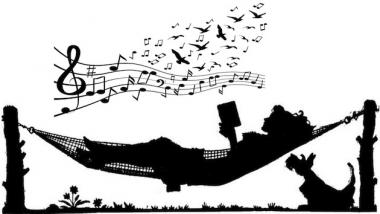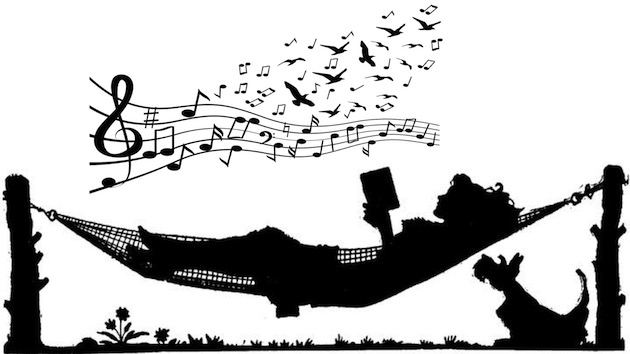
Last summer we offered our summer-reading picks in the SFCV Beach Blanket Bibliography, and we followed that in February with Book It! Great Reads in Music, 2016. Those articles sparked a lot of discussion and many suggestions from our readers and contributors, and we’ve included many of their recommendations in our new raft of music-oriented books for your beach bag. Some are hot off the press, others are old favorites. All are guaranteed to provide hours of pleasure in your hammock, on your beach blanket, or in your favorite living-room chair.
New and Noteworthy
Toscanini: Musician of Conscience
Harvey Sachs
Liveright Publishing, 2017
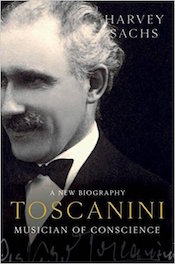 It’s hard to imagine any symphonic conductor today competing for headlines, but not all that long ago Arturo Toscanini was among the most famous people in the world — a staple of newspaper coverage everywhere. Beyond his fame and incomparable music influence is a great story of a rich, complex, often-turbulent life. Harvey Sachs wrote a biography of Toscanini nearly 40 years ago, but his new, vastly expanded tome embraces much more information and insight gleaned from relatives and associates. James Levine writes, “No other musician had as great an impact as Arturo Toscanini on the performance of opera and symphonic music in the twentieth century. With tremendous passion and stubbornness―and thanks to his extraordinary talents―he reshaped our ideas about what a conductor’s goals should be and how to achieve them.”
It’s hard to imagine any symphonic conductor today competing for headlines, but not all that long ago Arturo Toscanini was among the most famous people in the world — a staple of newspaper coverage everywhere. Beyond his fame and incomparable music influence is a great story of a rich, complex, often-turbulent life. Harvey Sachs wrote a biography of Toscanini nearly 40 years ago, but his new, vastly expanded tome embraces much more information and insight gleaned from relatives and associates. James Levine writes, “No other musician had as great an impact as Arturo Toscanini on the performance of opera and symphonic music in the twentieth century. With tremendous passion and stubbornness―and thanks to his extraordinary talents―he reshaped our ideas about what a conductor’s goals should be and how to achieve them.”
The Exile’s Song: Edmond Dédé and the Unfinished Revolutions of the Atlantic World
Sally McKee
Yale University Press, 2017
 As SFCV has been pointing out in numerous recent articles, there is a large and largely unknown history of African-American contributions to classical music. Sally McKee’s new biography of Edmond Dédé, a free black composer from New Orleans who emigrated to Paris in 1855, fills in some more of the story. McKee explores how Dédé, raised in the biggest slave market in the United States was able to shed that legacy, go on to train with several of France’s most prominent classical musicians, and eventually take leadership of some of Bordeaux’s most popular orchestras over the next 36 years. During that time he composed ballets for one of the best theaters outside of Paris and gained recognition as a popular orchestra leader.
As SFCV has been pointing out in numerous recent articles, there is a large and largely unknown history of African-American contributions to classical music. Sally McKee’s new biography of Edmond Dédé, a free black composer from New Orleans who emigrated to Paris in 1855, fills in some more of the story. McKee explores how Dédé, raised in the biggest slave market in the United States was able to shed that legacy, go on to train with several of France’s most prominent classical musicians, and eventually take leadership of some of Bordeaux’s most popular orchestras over the next 36 years. During that time he composed ballets for one of the best theaters outside of Paris and gained recognition as a popular orchestra leader.
Worthy Nonfiction
The Rest Is Noise: Listening to the Twentieth Century
Alex Ross
Picador, 2007
 Alex Ross, music critic for The New Yorker, offers a comprehensive overview of — and insight into — the kaleidoscopic realm of 20th-century music, beginning with Mahler and Strauss and continuing in a roughly chronological progression through to Glass and Reich at century’s end. Along the way he examines the influence of jazz and popular music, political turmoil, cultural upheaval, and avant-garde impulses on the composers wrestling with “classical music” in the modern era. The book earned a boatload of awards and was on countless top-10 lists. Alan Rusbridger of The Guardian wrote, “Just occasionally someone writes a book you've waited your life to read. Alex Ross's enthralling history of 20th-century music is, for me, one of those books.”
Alex Ross, music critic for The New Yorker, offers a comprehensive overview of — and insight into — the kaleidoscopic realm of 20th-century music, beginning with Mahler and Strauss and continuing in a roughly chronological progression through to Glass and Reich at century’s end. Along the way he examines the influence of jazz and popular music, political turmoil, cultural upheaval, and avant-garde impulses on the composers wrestling with “classical music” in the modern era. The book earned a boatload of awards and was on countless top-10 lists. Alan Rusbridger of The Guardian wrote, “Just occasionally someone writes a book you've waited your life to read. Alex Ross's enthralling history of 20th-century music is, for me, one of those books.”
Schubert’s Winter Journey: Anatomy of an Obsession
Ian Bostridge
Penguin/Random House, 2015
 Musician and SFCV reader Tom Devine recommended this book, describing it at “a brilliant work of historical, linguistic, literary, and musical interpretation by one of our finest singers [tenor Ian Bostridge], who has performed Winterreise over 100 times in concert halls all over the world.” The somber themes of Schubert’s masterpiece may suggest darkest winter, but this is a book for all seasons. The Wall Street Journal calls it “an unusual and compelling book: Omnivorous and digressive, it captures the enduring mystery of this seminal work in the lieder tradition. Readers who love Winterreise will find the book a rare treat, and those who do not yet know the piece have here a fine companion as they listen ... Mr. Bostridge’s mastery of the music and the text is evident throughout.”
Musician and SFCV reader Tom Devine recommended this book, describing it at “a brilliant work of historical, linguistic, literary, and musical interpretation by one of our finest singers [tenor Ian Bostridge], who has performed Winterreise over 100 times in concert halls all over the world.” The somber themes of Schubert’s masterpiece may suggest darkest winter, but this is a book for all seasons. The Wall Street Journal calls it “an unusual and compelling book: Omnivorous and digressive, it captures the enduring mystery of this seminal work in the lieder tradition. Readers who love Winterreise will find the book a rare treat, and those who do not yet know the piece have here a fine companion as they listen ... Mr. Bostridge’s mastery of the music and the text is evident throughout.”
Novels for All Seasons
Mawrdew Czgowchwz
James McCourt
New York Review Books Classics
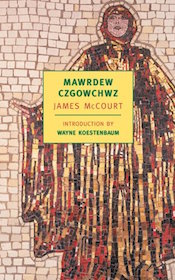 SFCV’s own Lisa Hirsch had lots of ideas for great summer reads, and first on her list was an opera-lover’s delight she calls a cult classic. Hirsch writes, “The story covers the career of the title character (pronounced ‘Mardew Gorgeous’), a singer of phenomenal range and emotive power who is sort of a cross between the five greatest singers you can think of and Maria Callas. (Note the initials.) It is a roman a clef and it’s a novel about opera fans in which it is important to keep in mind that fan comes from ‘fanatic.’” The New York Times wrote, "A gloriously flamboyant debut. Take it in spoonfuls and you’ll find passages to fall in love with. Sooner or later, you may even find yourself reading them aloud to your friends."
SFCV’s own Lisa Hirsch had lots of ideas for great summer reads, and first on her list was an opera-lover’s delight she calls a cult classic. Hirsch writes, “The story covers the career of the title character (pronounced ‘Mardew Gorgeous’), a singer of phenomenal range and emotive power who is sort of a cross between the five greatest singers you can think of and Maria Callas. (Note the initials.) It is a roman a clef and it’s a novel about opera fans in which it is important to keep in mind that fan comes from ‘fanatic.’” The New York Times wrote, "A gloriously flamboyant debut. Take it in spoonfuls and you’ll find passages to fall in love with. Sooner or later, you may even find yourself reading them aloud to your friends."
A Mixture of Frailties
Robertson Davies
Penguin Canada, 1980
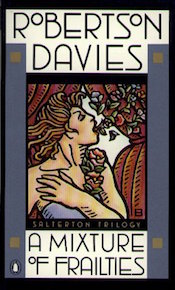 Here’s another suggestion from Lisa Hirsch, and one of my own favorites from years past. Canadian author Robertson Davies frequently wove musical threads into his novels, which entertainingly tackle serious themes in a generally playful style. A Mixture of Frailties is the third installment in his Salterton Trilogy, an extended exploration of Canada’s challenging artistic relationship with the high cultures of Europe. The novel follows the progress of an unschooled singer from the provinces who becomes the beneficiary of a trust that sweeps her away to England for training, molding, and her destiny as a leading diva with surprising career. You’ll want to read the full trilogy, but this novel stands on its own merits. The New York Times called it “impudent, amused and amusing, and sterling entertainment.” For more musical fun with Davies, try The Lyre of Orpheus, from his Cornish Trilogy, which follows the shenanigans surrounding an effort to complete E.T.A. Hoffman’s unfinished opera, Arthur of Britain.
Here’s another suggestion from Lisa Hirsch, and one of my own favorites from years past. Canadian author Robertson Davies frequently wove musical threads into his novels, which entertainingly tackle serious themes in a generally playful style. A Mixture of Frailties is the third installment in his Salterton Trilogy, an extended exploration of Canada’s challenging artistic relationship with the high cultures of Europe. The novel follows the progress of an unschooled singer from the provinces who becomes the beneficiary of a trust that sweeps her away to England for training, molding, and her destiny as a leading diva with surprising career. You’ll want to read the full trilogy, but this novel stands on its own merits. The New York Times called it “impudent, amused and amusing, and sterling entertainment.” For more musical fun with Davies, try The Lyre of Orpheus, from his Cornish Trilogy, which follows the shenanigans surrounding an effort to complete E.T.A. Hoffman’s unfinished opera, Arthur of Britain.
Charles Jessold, Considered as a Murderer
Wesley Stace
Picador, 2011
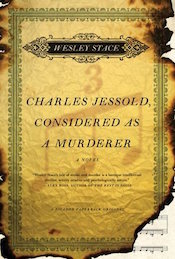 Sonoma County fiddler and polymath Jon Berger suggested this book, which he describes as “a mystery set among the early 20th-century folklorists, Vaughan Williams and Holst and Grainger and that crowd, who were looking to English folk music for the authentic national musical voice that would drive out the hated German influences from English classical music. It succeeds really well both as an introduction to that whole movement and as a straight-ahead mystery. By the way, Wesley Stace is the real name of the singer-songwriter who performs under the name John Wesley Harding.” I took Jon's tip and I'm in the middle of it right now and loving it. Critics concur. The New Yorker’s Alex Ross notes, “Wesley Stace’s tale of music and murder is a baroque intellectual thriller, wittily erudite and psychologically astute.”
Sonoma County fiddler and polymath Jon Berger suggested this book, which he describes as “a mystery set among the early 20th-century folklorists, Vaughan Williams and Holst and Grainger and that crowd, who were looking to English folk music for the authentic national musical voice that would drive out the hated German influences from English classical music. It succeeds really well both as an introduction to that whole movement and as a straight-ahead mystery. By the way, Wesley Stace is the real name of the singer-songwriter who performs under the name John Wesley Harding.” I took Jon's tip and I'm in the middle of it right now and loving it. Critics concur. The New Yorker’s Alex Ross notes, “Wesley Stace’s tale of music and murder is a baroque intellectual thriller, wittily erudite and psychologically astute.”
From the Folk Side
Last Night’s Fun: A Book About Irish Traditional Music
Ciaran Carson
North Point Press, 1998
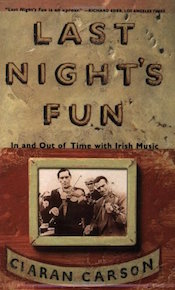 Newcomers to a traditional Irish seisún (music session) are often baffled by the protocols and etiquette of the assembled fiddlers, pipers, and flute players, who effortlessly glide from tune to tune, sometimes for hours on end, without a dot of sheet music in sight and no discernable discussion about what to play next. Ciaran Carson’s slim volume of essays takes the reader inside the history, structure, instruments, and lore of traditional Irish music and the musicians who make it. With jaunty titles taken from the names of the jigs, reels, hornpipes, and other dance tunes that comprise the repertoire (“Last Night’s Fun,” “Hurry the Jug,” “Good Morning to My Nightcap”), each of the two-dozen chapters reveals an aspect of the influences that have shaped this living oral tradition. His stream-of-consciousness description of an evening of music and its aftermath from the perspective of a musician lost in the moment of making music is worth the price of the book. Carson is an accomplished Irish wooden flute player, and you can hear him playing in a traditional pub-style seisún in this video.
Newcomers to a traditional Irish seisún (music session) are often baffled by the protocols and etiquette of the assembled fiddlers, pipers, and flute players, who effortlessly glide from tune to tune, sometimes for hours on end, without a dot of sheet music in sight and no discernable discussion about what to play next. Ciaran Carson’s slim volume of essays takes the reader inside the history, structure, instruments, and lore of traditional Irish music and the musicians who make it. With jaunty titles taken from the names of the jigs, reels, hornpipes, and other dance tunes that comprise the repertoire (“Last Night’s Fun,” “Hurry the Jug,” “Good Morning to My Nightcap”), each of the two-dozen chapters reveals an aspect of the influences that have shaped this living oral tradition. His stream-of-consciousness description of an evening of music and its aftermath from the perspective of a musician lost in the moment of making music is worth the price of the book. Carson is an accomplished Irish wooden flute player, and you can hear him playing in a traditional pub-style seisún in this video.
Singing Family of the Cumberlands
Jean Ritchie
University of Press of Kentucky, 1988
 When Jean Ritchie died two years ago, she left a huge legacy of recorded music, wonderful original compositions, and incalculable influence on generations of folk singers. She was largely responsible for the revival of the Appalachian dulcimer and for disseminating many ancient ballads and songs passed down through her family via the oral tradition since the 18th century. This classic book, first published in ’50s, includes 42 of those songs. More importantly, it places each of those songs in the living tradition Ritchie experienced growing up in Viper, Kentucky, deep in the Cumberland Mountains, where the Ritchie family sang at every occasion — for work, prayer, celebrations, and grief. Essential reading for anyone with even a glimmering of interest in traditional American music. Maurice Sendak provided the charming illustrations.
When Jean Ritchie died two years ago, she left a huge legacy of recorded music, wonderful original compositions, and incalculable influence on generations of folk singers. She was largely responsible for the revival of the Appalachian dulcimer and for disseminating many ancient ballads and songs passed down through her family via the oral tradition since the 18th century. This classic book, first published in ’50s, includes 42 of those songs. More importantly, it places each of those songs in the living tradition Ritchie experienced growing up in Viper, Kentucky, deep in the Cumberland Mountains, where the Ritchie family sang at every occasion — for work, prayer, celebrations, and grief. Essential reading for anyone with even a glimmering of interest in traditional American music. Maurice Sendak provided the charming illustrations.
Satan is Real: The Ballad of the Louvin Brothers
Charlie Louvin with Benjamin Whitmer
Igniter, 2013
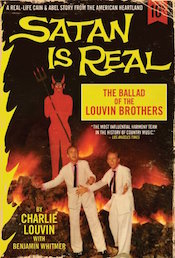 The early years of American country music were notable for the prominence of family acts such as the Carter Family and many brother duets: the Delmore Brothers, the Blue Sky Boys, the Monroe Brothers, the Stanley Brothers, and many more. Perhaps none of these sibling pairs was more influential than Ira and Charlie Louvin, dubbed “the most influential harmony team in the history of country music” by the Los Angeles Times. Their angelic vocal blend, supported by supple guitar and mandolin accompaniment produced a hit parade of songs — including traditional numbers learned from their mother as well as their own sparkling originals. If their music was heavenly, their personal relationship was anything but, and alcoholism, jealousy, and the pressures of changing tastes ultimately drove the brothers apart. It’s a compelling, harrowing tale, and this rollercoaster read tells Charlie’s side of the story in an earthy, plain-spoken style. It’s terrific. The Wall Street Journal called it “One of the most important and illuminating memoirs ever written by a country singer.” The wild cover illustration was taken on a full-size set the brothers built for their gospel LP, Satan is Real. Don't know about Satan, but the fires burning around them were real.
The early years of American country music were notable for the prominence of family acts such as the Carter Family and many brother duets: the Delmore Brothers, the Blue Sky Boys, the Monroe Brothers, the Stanley Brothers, and many more. Perhaps none of these sibling pairs was more influential than Ira and Charlie Louvin, dubbed “the most influential harmony team in the history of country music” by the Los Angeles Times. Their angelic vocal blend, supported by supple guitar and mandolin accompaniment produced a hit parade of songs — including traditional numbers learned from their mother as well as their own sparkling originals. If their music was heavenly, their personal relationship was anything but, and alcoholism, jealousy, and the pressures of changing tastes ultimately drove the brothers apart. It’s a compelling, harrowing tale, and this rollercoaster read tells Charlie’s side of the story in an earthy, plain-spoken style. It’s terrific. The Wall Street Journal called it “One of the most important and illuminating memoirs ever written by a country singer.” The wild cover illustration was taken on a full-size set the brothers built for their gospel LP, Satan is Real. Don't know about Satan, but the fires burning around them were real.

